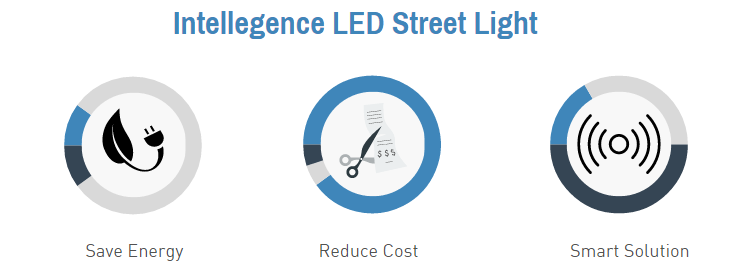Steps That Have Been Taken Towards Achieving Smarter Cities Lighted Using LED Street Lights
Time:2016-05-25 Views:2329 Compile:SUNPER

For us to live and have smart cities, we must take some steps towards achieving this goal. One of the ways to have smarter cities is by lighting our cities. To begin with, throughout the history of the lighting industry, all lights are known to have one primary function which is none-other but turning on and off. Majority of the lighting actions require no intelligence apart from a few dim lights that are set to timers.
For instance, the street lights may turn on at dusk and then turn off at dawn. However, they do not change light output depending on how many cars are on road or on how much ambient light is available. This too applies to the parking garage lighting, canopy lighting and many more others. With just about 20 percent of the world’s energy consumption coming from lighting only, you can now imagine how much energy we could save by a little feedback from our environment.
The municipal governments seem to pay attention to their intelligent lighting systems. Since the budgets are becoming more restrictive with time, energy consumption in cities has also become a focal point to most local governments. Most municipal governments have turned their attention to lighting their streets. This is because this is an obvious way to free up the budgeting resources while at the same time maintaining a swell as improving safety. It is not a surprise that many cities have started installing the LED street lights. This is done in order to have a positive long-term cost analysis having the potential to reduce power consumption as well as maintenance costs.
For those familiar with the government organizations, they are aware that they are not the first ones to embrace this newer technology. This is because most municipalities are taking steps towards installation of the LED street lights. This is after a lot of research and field studies. However, there is still room for further growth even if these are important steps in the right direction with positive impacts. Most of the LED street lights available in the market today are primarily fixed function LED units.
As time goes by, the target is to have more and more intelligence lights and connectivity being brought to the lighting industry so as to reduce energy consumption, cost and excess light pollution. Below is what it takes to have smart lighting solutions in our cities.

1. Reduce the unit cost
This is the simplest answer towards achieving our goals. The intelligent outdoor LED lighting solutions may prove long-term cost savings by having reduced operating costs in both maintenance and energy consumption. Most often this is usually not enough for the financially strapped cities considering the bonds and other financial measures on the initial costs of installation of the LEDs.
2. Decide on the extra upfront costs
There is usually a break point when cities decide that the excess upfront costs are not worth investmenting. This might be a decision point between a non-LED installation and an LED installation or even between a fixed-function LED installation and a smart-LED installation. It is very similar to cost considerations for consumers wanting to replace their fluorescent and incandescent bulbs. Although many people are aware that they will save money in the long-run, they are not yet ready fronting some hundred dollars to replace the existing lighting system.
Since technology has improved, this has made the prices of LED lighting to go down. Therefore, returns on investment of networked and intelligent lighting solutions should be no-brainer. In fact, most municipalities have already started taking the advantage of these solutions with enough financing. For instance, the intelligent dimming is able to provide energy savings. Beyond the obvious as well as substantial energy savings of the dimming lights, cost reductions are seen in areas such as maintenance costs since crews do not require to manually monitor the installed lights.
Similarly, the utility charges may be reduced since the metering solutions enables accurate measurements of the energy consumption data, thereby eliminating the fixed rate fees per street light. Longevity of lights can be maximized by using intelligent solutions. With the capability to adjust light output for the LED aging, color shifting and failure, you should improve the lifetime of the LED-based installations.
Generally, there are innumerable benefits that come with intelligence and networking. The only challenge is to make this proof self-apparent and easier for customers to use prior to investing.
How To Increase Savings with DLC Listed LED Product Rebates
Next:The 5 Way To Cut Down The Costs Of Your Power Bills
User comments
Your current input 0 characters(Reply for at least 6 characters)。
Online Services

Mobile: +86 18938902515 (Mr.Allen)
Tel:+86 755 23159099
Fax:+86 755 61673151
E-mail: sales@sunper.net
zip code: 518108











